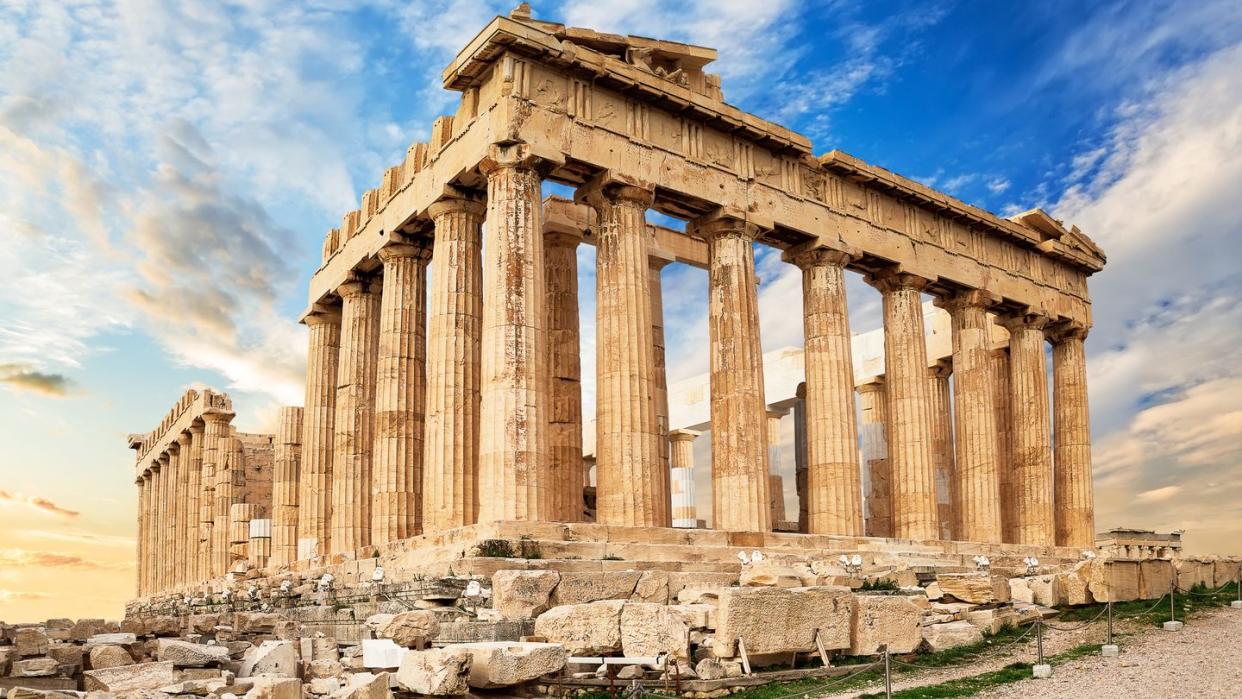A Jaw-Dropping New Clue May Reveal a Hidden Temple Lying Beneath the Parthenon

A smattering of ancient 6th century B.C. Greek graffiti reveals that a different temple likely existed where the Parthenon now sits.
Clues from drawings made by a shepherd show there was likely a temple older on the same site as the Parthenon before advancing armies destroyed it.
The graffiti reveals that the temple was of an impressive size.
Mikon, a Greek man (potentially a shepherd) from the 6th century BC, may have left us the ultimate clue to an unknown temple that once filled the space now occupied by the great Parthenon. And that clue comes in the form of ancient graffiti.
Amidst a marble outcrop about 12 miles outside of Athens, and discovered in an area covered with more than 2,000 graffiti drawings made by shepherds and goatherds (drawings that included ships, animals, buildings, warriors, and a fair share of erotic scenes ), one image stands out. The depiction shows a temple complete with columns and steps, and it comes with an inscription reading, “To Hekatompedon … Mikonos”.
As Janric van Rookhuijzen—classical archeologist and postdoctoral research fellow at Radbound University—wrote in The Conversation, that translates roughly to “the 100-foot building of Mikon.”
Rookhuijzen and fellow researcher Merle Langdon published a study in the American Journal of Archaeology claiming that the ancient graffiti in the Bracko Hills of Vari show a temple on the Acropolis of Athens that predates the Parthenon (a marble temple for the goddess of Athena). The discovery is now providing ancient answers to long-debated questions.
By signing his graffiti, Mikon allowed the drawing to be dated. He used an ancient alphabet that the scholars believe makes it “clear that the drawing was made as early as the 6th century B.C.” And with the inscription giving scale to the drawing, it seems that the temple was indeed of impressive size.
“It is likely that Mikon wanted to depict a building on the Acropolis of Athens,” Rookhuijzen writes, noting the Acropolis is visible from the drawing site. “However, because the alphabet he used can be firmly dated to the 6th century BC, the drawing must be at least 50 years older than the Parthenon, which was begun around 450 BC.”
The Acropolis of Athens has a pre-Parthenon past, according to historians. Sure, one of the most revered ancient structures now sits atop the hill, but archeologists have long debated what stood on the location before the Parthenon—many believe that in 480 B.C., the Persian army destroyed all buildings already erected there. Rookhuijzen said the Acropolis Museum in Athens houses damaged sculptures that may have been part of a pre-war temple.
Adding to the intrigue, Rookhuijzen writes, is an ancient Greek document from before the attack that mentions a Hekatompedon on the Acropolis, used for “treasure storage.”
“Some think the Hekatompedon mentioned in the decree was a temple, as Greek temples normally served as the storage of treasures offered to the gods,” Rookhuijzen writes. “But many others argue that the word Hekatompedon cannot refer to a temple at all and must have been an open courtyard on the Acropolis.”
Mikon may have just provided the answer, using an escape from the boredom of being alone for days with animals to create his drawing. Now, that drawing serves as a clue centuries later. “The graffito made by Mikon,” Rookhuijzen wrote, “shows how a small scribble may be the key to tackling the historical riddles behind one of the world’s most iconic archeological sites.”
You Might Also Like

